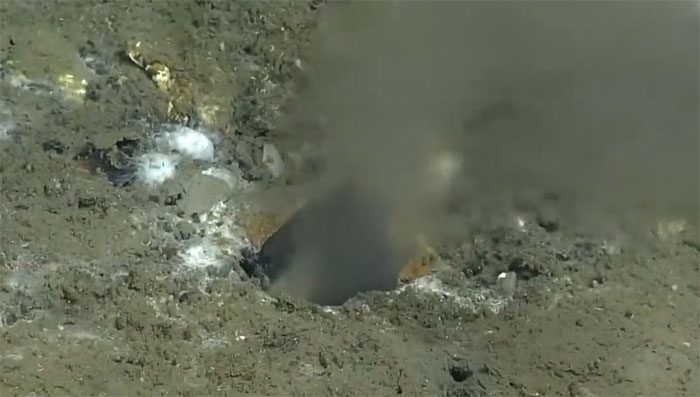Scientists Discover Leak That Causes Loss of Warm Water Similar to Lubricants, Affecting Earthquake Risk.
Pythias Oasis leak ejecting warm water. (Video: UW)
A research team at the University of Washington (UW) discovered a leak that ejects warm liquid from the seafloor, approximately 80 kilometers off the coast of Newport, Oregon, as reported by Futurism on April 13. This unique water source is named Pythias Oasis and is detailed in a newly published study in the journal Science Advances. Observations indicate that it originates from a depth of 4 kilometers below the seafloor at the Cascadia subduction zone, an area at risk of producing a magnitude 9 earthquake in the Pacific Northwest.
The scientists made this discovery during a voyage on the RV Thomas G. Thompson. The ship’s sonar (sound navigation and ranging) detected bubble streams at a depth of about 1.2 kilometers below the sea surface. Upon further exploration with a robot, the team noticed that the bubbles were only a small component of the warm liquid flow, which was chemically distinct from the seafloor sediments.
“The scientists explored that direction and what they observed was not just methane bubbles but water erupting from the seafloor like a geyser. That is something I have never seen before, and as far as I know, it has not been observed previously,” said co-author Evan Solomon, an associate professor of oceanography at UW.
Subsequent explorations indicated that the liquid ejected is 9 degrees Celsius warmer than the surrounding seawater. Calculations suggest that the liquid flows directly from the Cascadia subduction zone, where the temperature is estimated to be between 150 and 250 degrees Celsius.

The liquid ejected is 9 degrees Celsius warmer than the surrounding seawater.
According to Solomon, this leak occurs near the massive fault lines that cross the Cascadia subduction zone. These faults—where oceanic plates and sediments slide past each other—exist because the oceanic plate collides with the continental plate at a specific angle, exerting pressure on the overlying continental plate. The loss of liquid from the subduction zone through these faults is significant because it reduces fluid pressure among sediment particles, thereby increasing friction between the oceanic and continental plates.
Solomon stated that the fluid leaking from the fault zone acts like a leaking lubricant. This increases the risk of earthquakes because a decrease in lubricant means pressure can build up and potentially lead to a devastating earthquake.
This is the first site of its kind known to the scientific community, according to Solomon. “Pythias Oasis provides rare information about processes occurring deep beneath the seafloor. The chemical characteristics indicate that this fluid comes from near the plate boundary, suggesting that the nearby faults regulate fluid pressure and facilitate slip along the central Cascadia subduction zone,” noted co-author Deborah Kelley, a professor of oceanography at UW.


















































